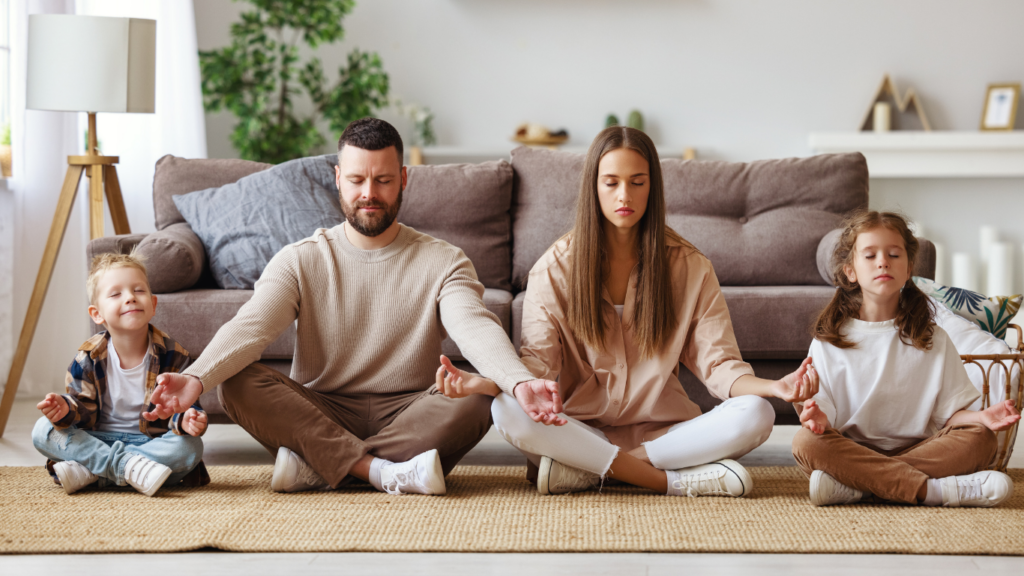Wellness doesn’t have to be complicated or time-consuming, especially when it comes to keeping the whole family healthy. I’ve found that small, consistent habits can make a big difference in how we feel physically and mentally. The best part? These habits are easy to adopt and can fit right into your family’s daily routine.
Importance Of Family Wellness
- Family wellness strengthens relationships and enhances quality of life. By prioritizing collective well-being, families create a supportive environment that fosters connection, trust, and resilience.
- Physical health improves when families engage in activities together, such as walking, biking, or cooking nutritious meals. These shared practices encourage healthy habits and make them sustainable over time.
- Mental and emotional health also benefit from family wellness. Regular check-ins, open communication, and shared mindfulness exercises reduce stress and help build emotional awareness.
- Routines focused on wellness promote positive behaviors in children. Kids often mimic actions they observe, so modeling healthy habits as a family ensures these practices carry into adulthood.
- A wellness-focused household reduces risks of chronic illnesses, including cardiovascular diseases and diabetes. Integrating preventative measures as a family strengthens long-term health outcomes.
By valuing family wellness, households build stronger bonds and create a foundation for lasting well-being.
Building Healthy Eating Habits
Healthy eating supports overall family wellness by ensuring balanced nutrition and fostering mindful choices. Creating inclusive routines makes it easier to maintain these habits long-term.
Meal Planning Together
Planning meals as a family encourages participation in food choices and ensures balanced nutrition. I involve everyone in selecting recipes, which helps accommodate preferences and dietary needs. For example, we rotate dinner themes like “Meatless Mondays” or “Taco Tuesdays” to keep meals exciting. Preparing a weekly menu helps minimize last-minute unhealthy options and streamlines grocery shopping.
Encouraging Hydration
Drinking enough water improves:
- energy levels
- digestion
- overall health
I make water easily accessible by keeping refillable bottles available for all family members. Adding natural flavors like lemon or cucumber keeps hydration interesting. For children, I suggest tracking their water intake with fun goals, like using charts or apps, to make it engaging.
Incorporating Physical Activity
Physical activity benefits the entire family by boosting energy, improving mood, and supporting long-term health. Making it part of the daily schedule ensures consistency and strengthens bonds.
Family Exercise Routines
Establishing shared exercise routines makes staying active enjoyable and sustainable. Scheduling activities like yoga sessions, quick morning stretches, or 20-minute workout videos encourages participation across age groups. Practicing simple bodyweight exercises together, such as squats and planks, promotes teamwork and healthy movement patterns. Keeping routines flexible helps accommodate varying energy levels and schedules.
Outdoor Adventures
Exploring the outdoors adds fun and excitement to physical activity. Activities like hiking, biking, or walking in local parks provide fresh air, vitamin D, and scenic surroundings. Weekend trips to nature trails or beaches create opportunities for family bonding. Organizing friendly games like tag or frisbee in open spaces ensures all family members stay active while having fun.
Creating A Positive Mental Health Environment

Fostering a supportive environment enhances the entire family’s mental health. By focusing on mindfulness and open communication, families strengthen emotional connections and reduce stress.
Practicing Mindfulness As A Family
Integrating mindfulness into daily routines promotes emotional well-being. I suggest starting with simple practices like deep-breathing exercises or short guided meditations, which can be done before bedtime or during quiet moments. Encouraging gratitude activities, such as sharing one positive thing from the day during dinner, helps shift focus toward positive experiences and builds resilience. Nature walks provide opportunities for mindfulness by encouraging everyone to observe and appreciate the surroundings. These practices, when done together, create calmness and connection, improving the mental state of family members.
Open Communication And Support
Establishing open communication builds trust and strengthens relationships. I recommend having regular check-ins, where family members share their feelings or discuss concerns in a judgment-free space. Creating a supportive atmosphere means addressing challenges constructively and acknowledging each person’s emotions without dismissing them. Showing empathy and validating feelings fosters emotional security. If conflicts arise, collaborative problem-solving ensures resolutions are respectful and inclusive. Families thrive when support is mutual and ongoing, contributing to a positive mental health environment.
Prioritizing Quality Sleep
Ensuring consistent, restorative sleep plays a key role in family wellness. Quality rest improves mood, energy, and overall health, supporting physical and mental well-being.
Establishing A Bedtime Routine
Creating a regular bedtime routine promotes better sleep for all family members. I focus on setting a consistent sleep schedule, aligning wake-up and bedtime with age-appropriate needs for children and adults. This consistency helps regulate the body’s internal clock, making it easier to fall asleep and wake up refreshed.
Calming activities before bed, like reading or light stretching, create a soothing transition to sleep. I include routines like a warm bath for young children or listening to soft music to signal that it’s time to wind down. Ensuring bedrooms are quiet, dark, and at a comfortable temperature contributes to a more restful environment.
Limiting Screen Time Before Bed
Reducing screen time in the hour before bed enhances sleep quality. I encourage family members to set aside devices like phones, tablets, and TVs to avoid exposure to blue light, which disrupts melatonin production.
Instead of screen-based activities, I introduce relaxing options like journaling, drawing, or engaging in quiet family conversations. For teens or adults who rely on devices for relaxation, enabling night shift mode or using blue light filters minimizes potential disruptions.
Small Steps For Long-Term Wellness
Making small, consistent changes helps families achieve lasting wellness without overwhelming their routines. By focusing on manageable habits, families can build a foundation for physical, mental, and emotional health.
1. Hydration Tracking
Drinking enough water is essential for maintaining energy and reducing fatigue. Encourage hydration by placing water bottles in accessible areas and using fun, reusable bottles to engage kids. For example, set water intake goals for the day and track progress using simple charts or apps.
2. Daily Movement
Integrating movement into everyday activities boosts long-term health. Short walks after meals, stretching exercises during TV commercial breaks, or playful dances can make physical activity a regular part of life. Keeping sessions brief ensures they stay enjoyable and doable for all family members.
3. Balanced Nutrition
Preparing balanced meals supports family health over time. Focus on incorporating whole foods like fruits, vegetables, lean proteins, and whole grains. Let kids help with basic tasks like washing vegetables or choosing ingredients to make meals exciting and educational.
4. Mindful Breaks
Introduce short mindfulness moments to enhance emotional well-being. Guided breathing for five minutes, gratitude journaling, or simply unplugging from screens for focused connection fosters calm and balance. These small practices help reduce everyday stress.
5. Prioritizing Rest
Quality rest is crucial for energy and health. Maintain bedtime consistency by setting alarms for sleep preparation, selecting relaxing pre-sleep activities like reading, and ensuring bedrooms have a calming environment that promotes better rest for everyone.



 Family Wellness Editor
Family Wellness Editor
